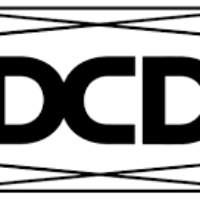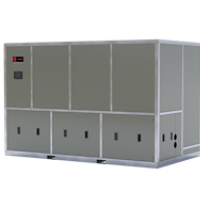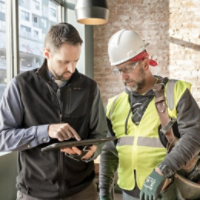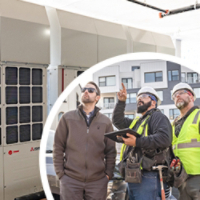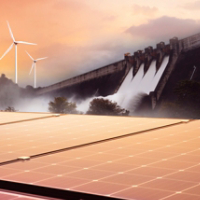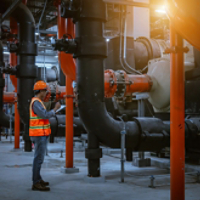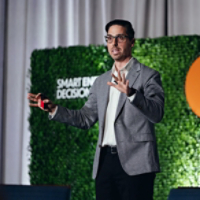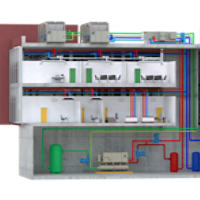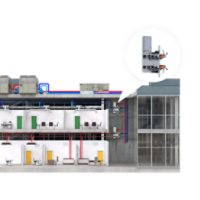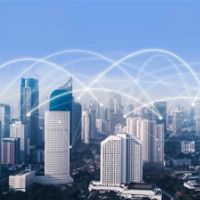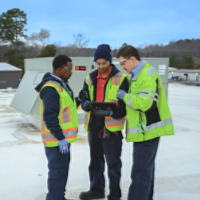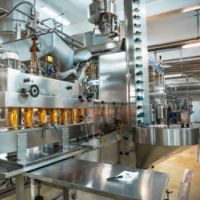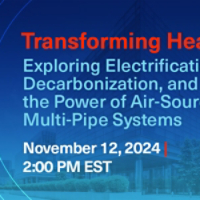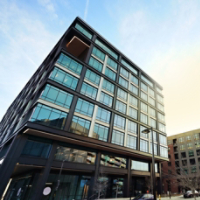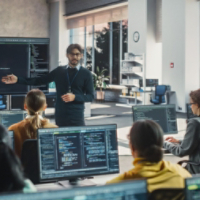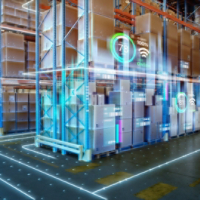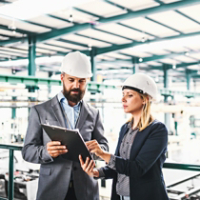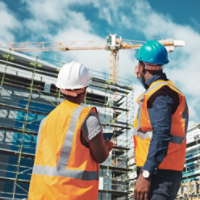Events and Webinars
-
AHR 2026 | Las Vegas | Feb 2-4
Trane supports you at every stage of your project and throughout your building's lifecycle. With our sustainable, efficient equipment, optimized system control strategies, predictive AI-powered building intelligence, and other advanced options, our comprehensive solutions ensure you achieve your business goals.November 24, 2025
-
Connect with Trane at DCD>Connect | Virginia | November 3-4, 2025
Your Trusted Innovator for Data Center Thermal ManagementSeptember 30, 2025
-
Connect with Trane at DCD>Connect | London | September 16-17, 2025
Your Trusted Innovator for Thermal Management in Mission Critical EnvironmentsAugust 29, 2025
-
Your Building. Our Expertise. A Better Tomorrow
At the 2025 AEE Expo and Conference, Trane's experts will be presenting on panels and available to connect with at booth #506. Explore resources, presentation information, and more details here.July 29, 2025
-
Learn About HVAC in Advanced Manufacturing and Gigafactories
We’re excited to collaborate with customers at the Advanced Manufacturing Facility Construction Conference on June 16-18. Join us at booth #TBD to engage with experts in developing, designing, and operating in complex mission critical environments.April 23, 2025
-
Join Us at Datacloud Global Congress in Cannes
Find out where Trane will be exhibiting, showcasing their innovations, and speaking at the Datacloud Global Congress 2025 in Cannes, France. Make plans to visit booth #83.April 23, 2025
-
Trane Contractor Partner Exchange 2025
The 2025 Partner Exchange Conference page provides essential information about the event, including details on workshop materials, Professional Development Hours (PDH) information, and contact information.April 19, 2025
-
Join Us at Data Center Investment Conference and Expo (DICE): National
Discover where Trane will be exhibiting, discussing innovations, and speaking at the DICE National 2025 event, and plan to stop by.April 15, 2025
-
Join Us at Data Center Dynamics Connect
Discover where we'll be exhibiting, showcasing innovations, and speaking at the 2025 DCD NY event, and plan to stop by.February 17, 2025
-
-
-
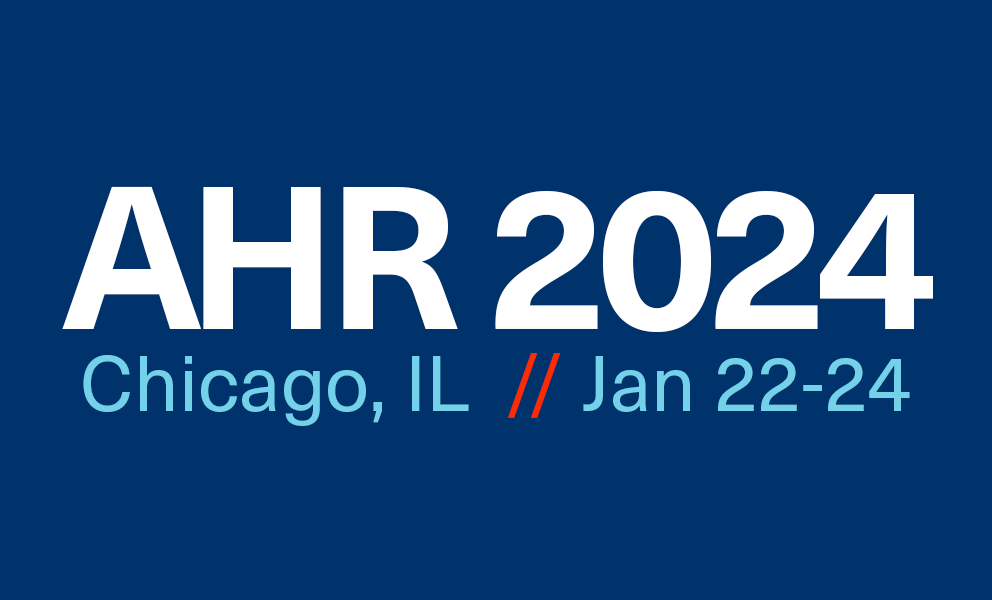 We'll meet you where you are - achieving building or project-specific goals for your customer - by combining sustainable and efficient equipment, optimized system control strategies, and the tools you need to get the job done.
We'll meet you where you are - achieving building or project-specific goals for your customer - by combining sustainable and efficient equipment, optimized system control strategies, and the tools you need to get the job done.December 13, 2022
-
Balance cost and efficiency with self-contained systems
Join Trane's webinar on water-cooled self-contained HVAC systems. Learn about product innovations, VAV design, and AI-enabled services for optimal performance and efficiency.October 03, 2025
-
Join our webinar on light commercial rooftop heat pumps. Learn about electrification trends, efficiency benefits, and application considerations. Stay ahead in HVAC with expert insights!
September 26, 2025
-
Reducing Energy Costs with Federal Tax Incentives: What Building Owners Need to Know
Learn how federal tax incentives like 48E Investment Tax Credits and Bonus Depreciation can accelerate your energy savings. Discover how to fund maintenance and modernization projects for privately or community owned facilities (including K-12 schools, higher ed, and healthcare facilities).September 04, 2025
-
2025’s Top VRF Questions Answered
You asked and we're answering. Learn from Trane experts about VRF installation, refrigerant piping, control integration, and more.August 27, 2025
-
Find the Free Heat: Air Cooled Heat Recovery
Discover the benefits of desuperheaters, partial heat recovery, and full heat recovery, and learn how each impacts system sizing and application. Gain insights through real-world examples on optimal plant layout and control for each heat recovery type.August 11, 2025
-
Keeping Up With Evolving Chiller Technology
Smart technologies are reshaping the building lifecycle, especially in HVAC. Join Trane experts discuss chiller evolution and how engineers can drive this change from the equipment level.July 15, 2025
-
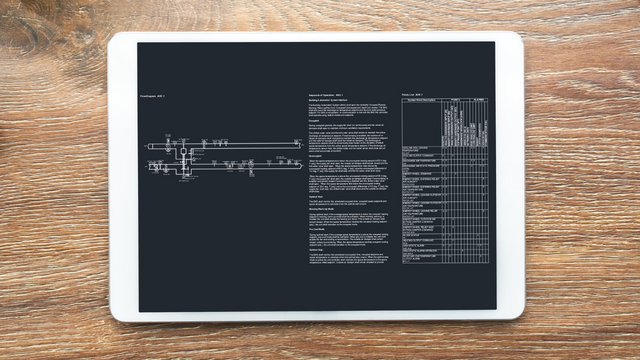
Trane® Design Assist™: Sustainable, High-Performance BAS Design
Join us for an engaging webinar to explore Trane Design Assist, a complimentary web application for creating smarter, more sustainable Building Automation System design.July 01, 2025
-
Stop Saying You Can’t Fund Your Energy & Sustainability Projects
Trevor Joelson, Enterprise Energy Services Account Executive at Trane, explores how businesses can secure funding for energy and sustainability projects.June 26, 2025
-
How to Unlock Higher HVAC Temperatures with Cascade Systems
Master the transition to electrified heating solutions. Discover how cascade systems offer a sustainable, high-temp alternative to traditional boilers, boosting efficiency and tackling retrofit challenges.June 18, 2025
-
Simplifying the Shift to Hydronic Heat Pump Systems
Learn to navigate the shift to hydronic heat pump systems, optimize heating efficiency, and tackle integration challenges in our expert-led webinar.June 03, 2025
-
How Legacy Control System Upgrades Unlock a Smarter Building
Explore the benefits of upgrading critical building infrastructure and gain valuable insights on how leveraging data can unlock the benefits of connected buildings.May 23, 2025
-
The Ripple Effect of Changing Technology for Engineering
Technological advancements are reshaping building lifecycles, with smart buildings enhancing performance, energy efficiency, and comfort. Join Trane experts to explore how engineers can drive this transformation through enhanced connectivity and optimization, setting new industry benchmarks for smarter, more sustainable buildings.May 09, 2025
-
What Engineers Need to Know: The Impact of A2L Refrigerants on VRF System Design and Installation
Explore the A2L refrigerant transition for VRF and Ductless systems, focusing on its impact on design and installation.April 14, 2025
-
The training you need to optimize the efficiency and reliability of your Trane HVAC systems and equipment.
March 27, 2025
-
Advancements in Industrial Chiller Technology: Exploring Modern Trends and Innovations
Discover the evolution of chiller design, advancements in compressor technology, and improvements in efficiency.March 20, 2025
-
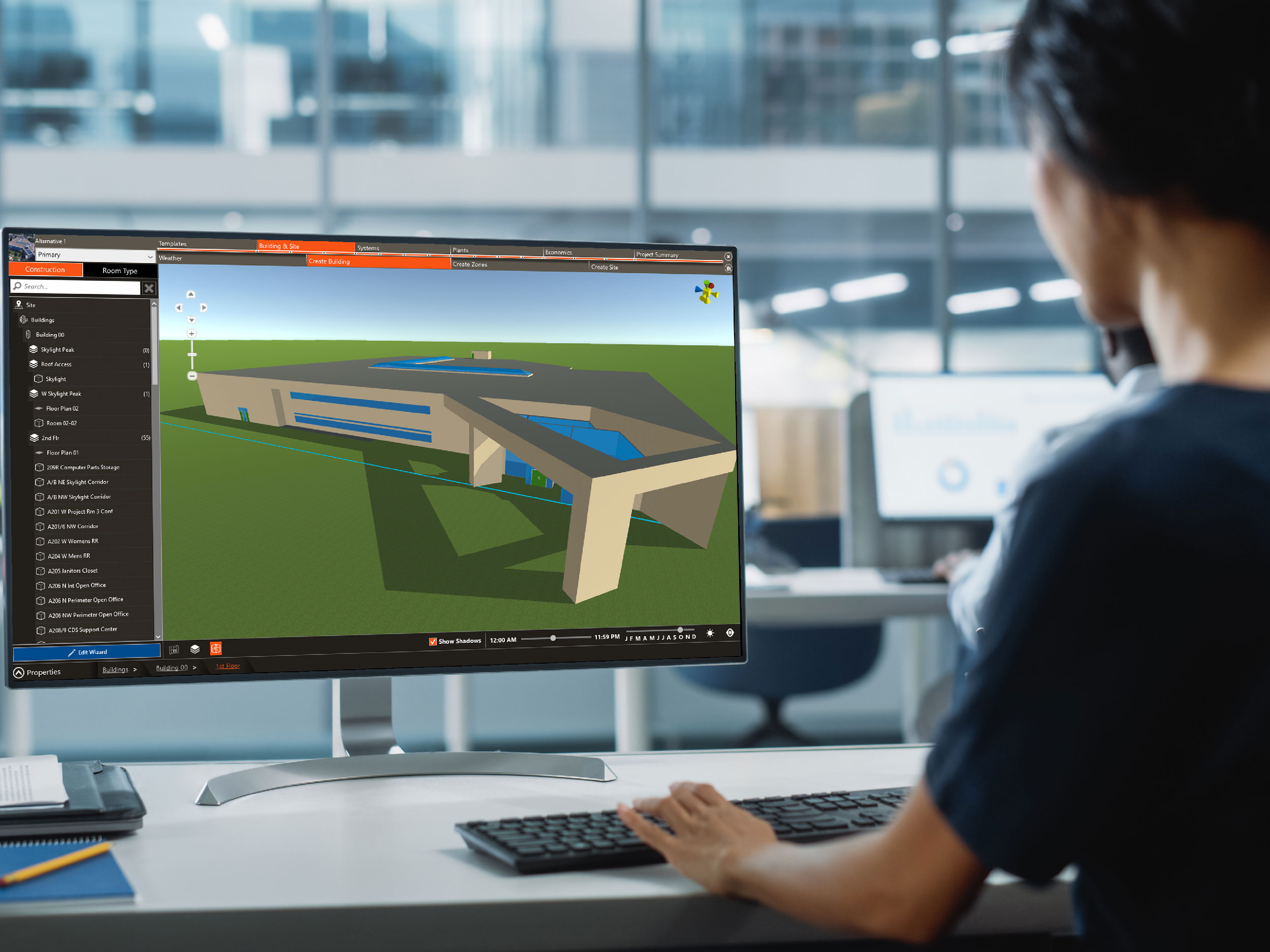
Experience the Latest Release of TRACE™ 3D Plus, V7
A walkthrough of the latest version of TRACE™ 3D Plus, our next generation building design and analysis software program.February 27, 2025
-
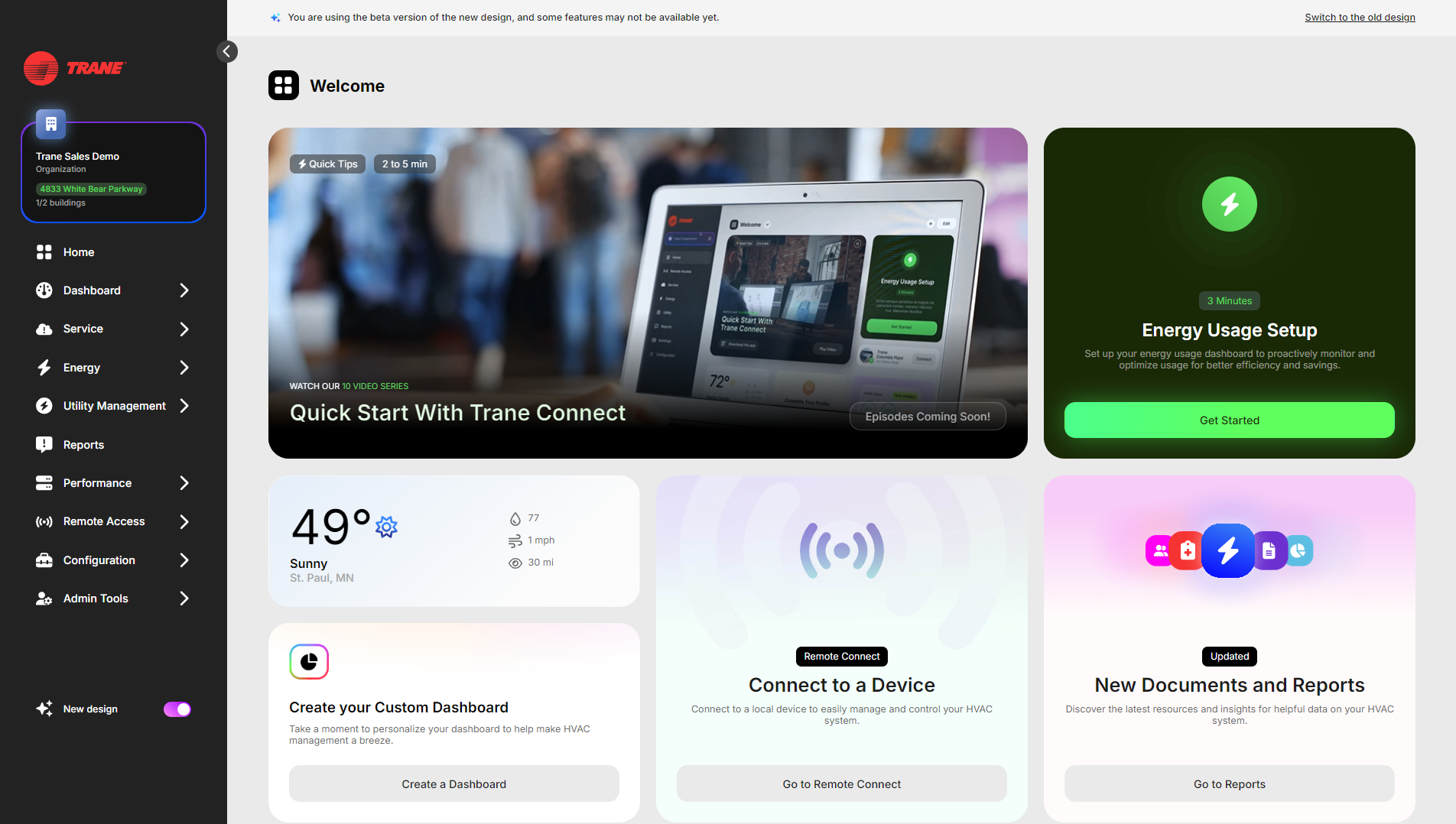 Experience our newly enhanced Trane Connect™ platform—the intuitive, all-in-one user interface that allows you to collaborate more effectively with your building.
Experience our newly enhanced Trane Connect™ platform—the intuitive, all-in-one user interface that allows you to collaborate more effectively with your building.February 25, 2025
-
Leveraging Energy Savings Performance Contracting for Sustainable Campus Revitalization
Join Laura Carpenter from the Department of Energy’s State and Community Energy Programs and Mike Hines, Director of Education Initiatives at Trane, for an insightful 30-minute Ed Talk on the transformative potential of Energy Savings Performance Contracting (ESPC) as a strategic tool for revitalizing aging campus infrastructure.December 16, 2024
-
Trane Select Assist Schedule View Training
Join our Trane Select Assist Schedule View Training Webinar! Trane Select Assist is an interactive tool that helps you choose the most appropriate configuration of Trane equipment to fit your facility.December 04, 2024
-
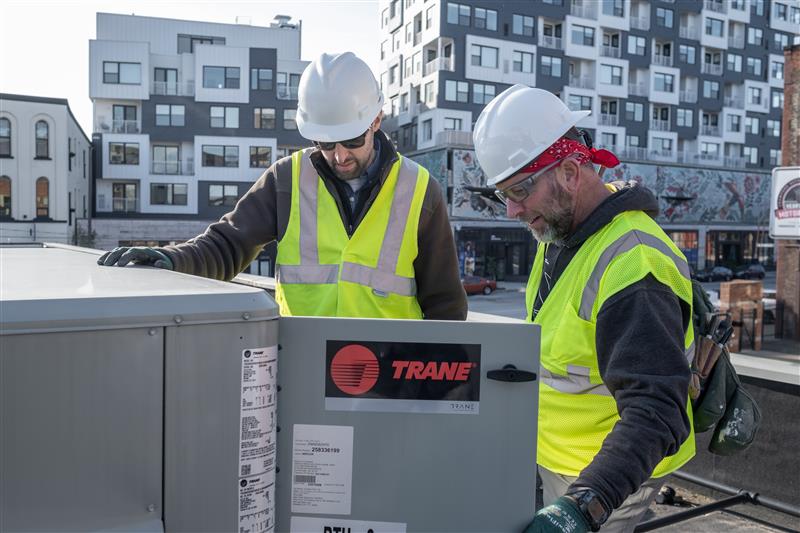
Preparing for A2L Refrigerants
Familiar refrigerants, including R-410A, are being phased out in newly manufactured equipment, with next-generation, low global warming (GWP) refrigerants becoming the new reality. These new refrigerants, classified as A2L, have been described as having "lower flammability" characteristics which will impact how systems are designed, installed, and maintained.November 20, 2024
-
Discover how Dedicated Outdoor Air Systems (DOAS) are transforming HVAC design by enhancing humidity control and energy efficiency, as new Department of Energy standards set to take effect in May 2024 redefine compliance for engineers. Join our webinar to explore the critical implications of these regulations, including an in-depth look at AHRI standards and the innovative Trane Horizon solution tailored for DOAS applications.
November 19, 2024
-
This webinar will highlight electrification, decarbonization and the power of Air-Source Multi-Pipe Systems by two Trane experts Adam Mayfield and Mike Filler.
November 12, 2024
-
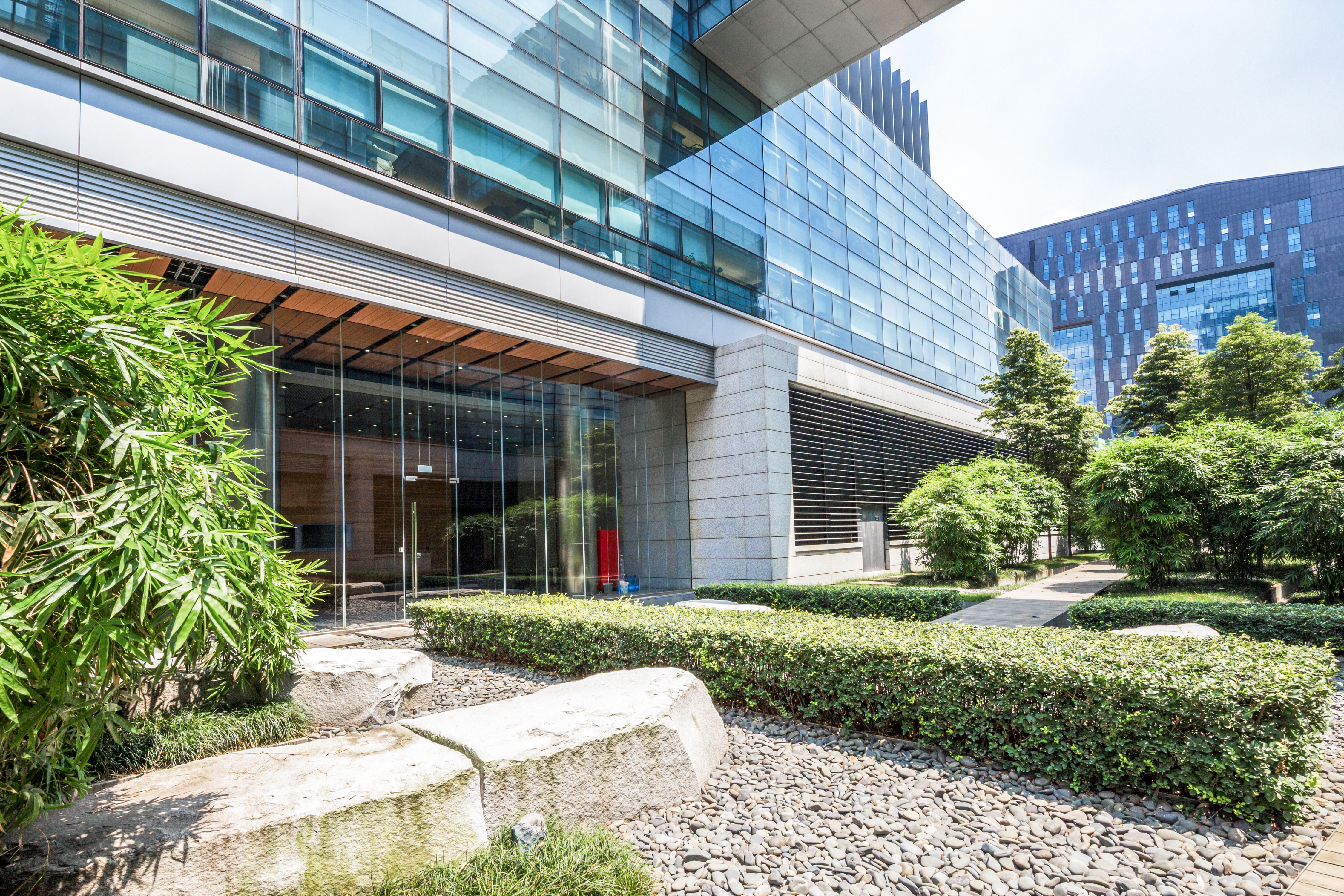
Decarbonizing the Built Environment: The Role of Embodied Carbon, LCAs, and EPDs
As the trend to achieve net zero carbon intensifies, the building sector, responsible for approximately 39% of global CO2 emissions, is experiencing a notable shift. Significant strides have been made in helping to reduce operational carbon through energy-efficient and electrified HVAC systems, as well as renewable energy. Now, the focus is shifting towards helping to decrease embodied carbon, which includes the greenhouse gas emissions arising from the entire lifecycle of building materials. This presentation will explore the key aspects of embodied carbon in the context of whole life carbon footprint.November 07, 2024
-
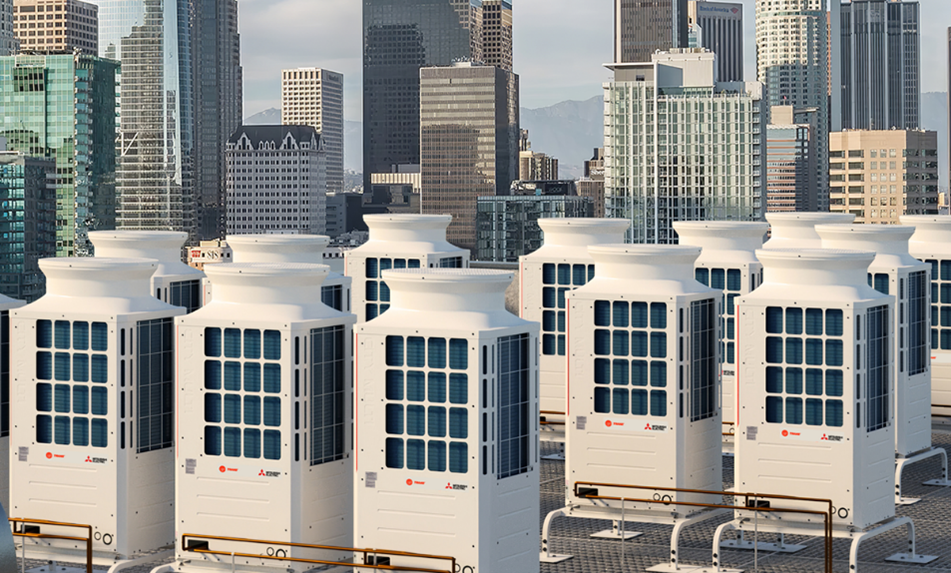 All-electric VRF (Variable Refrigerant Flow) technology offers quiet operation, flexible installation, and scalability, making it energy-efficient and cost-effective by heating or cooling only necessary spaces.
All-electric VRF (Variable Refrigerant Flow) technology offers quiet operation, flexible installation, and scalability, making it energy-efficient and cost-effective by heating or cooling only necessary spaces.November 05, 2024
-
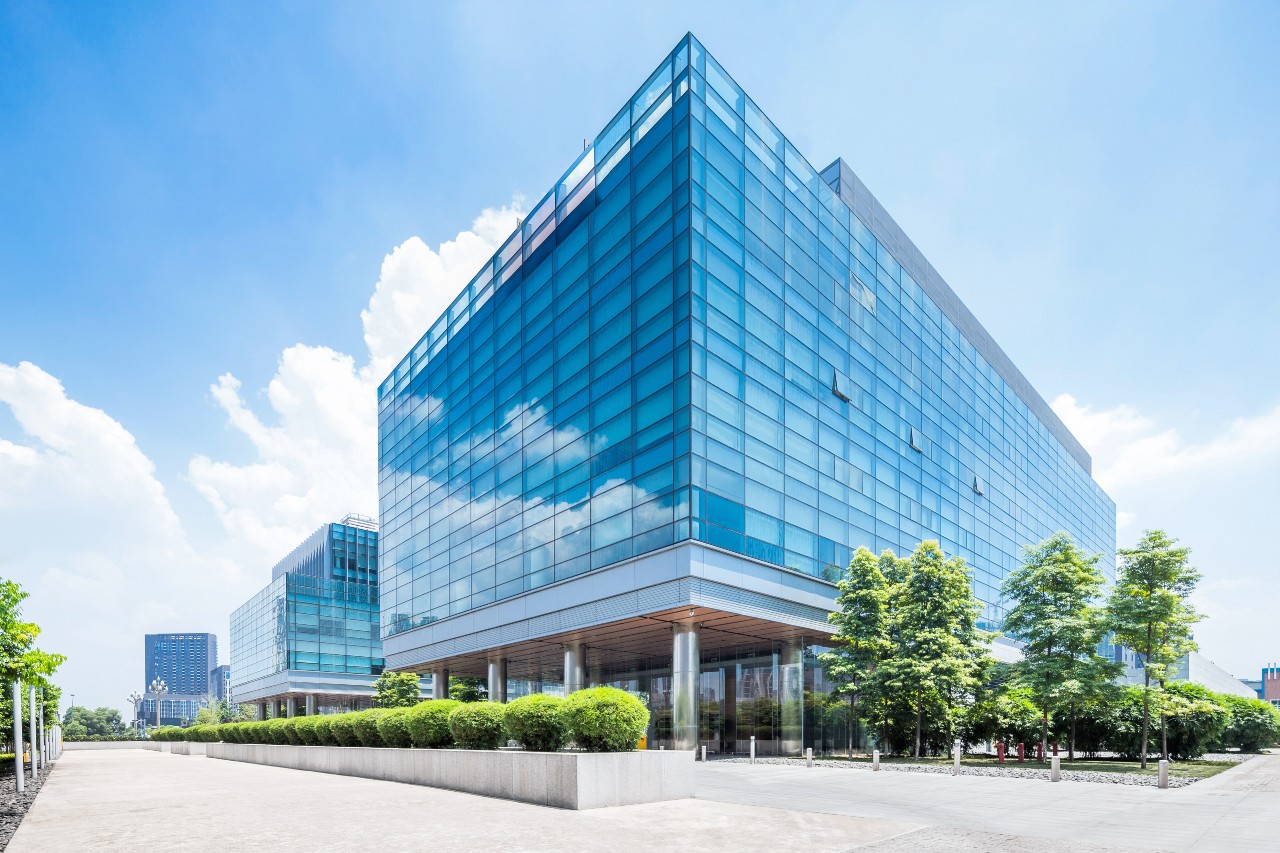
Not Your Grandad’s VAV: What’s New in Rooftop VAV Systems
Explore the advancements in rooftop VAV systems. Presenters will discuss VAV system principles and benefits including improved performance, low-GWP refrigerants, optimized indoor air quality, occupant comfort and control, and AI-enabled services.October 23, 2024
-
Scope 1 Emissions Reduction: Why All Eyes are On Heat Pump Technology
Institutions with sustainability goals that include a transition from direct fossil fuel usage (Scope 1 emissions) are increasingly adopting heat pump technology as a low-carbon solution for heating and cooling requirements. Heat pumps, which are nearly a 100-year-old technology, provide ultra-high efficiency cooling and enable heating requirements to be met with the same high-efficiency technology.October 23, 2024
-
Modernizing Buildings with Digital Equipment Controls
Smart buildings of the future drive efficiency and sustainability and start with digitally enabled HVAC systems. Building owners are looking for solutions that can help provide reliable automation and drive ROI with increased sustainable operations. Meanwhile, contractors are faced with challenges like changing DOE regulations, labor shortages, and complex decarbonization initiatives. Not sure where to start? Trane can helpSeptember 11, 2024
-
From Classroom to Career: How Certifications Enable Practical STEM Learning and CTE Readiness
Schools and districts are under increasing pressure to align education with practical skill development, ensuring students are equipped for the workforce. This webinar will delve into innovative strategies for integrating STEM and Career Technical Education (CTE), arming students with foundational skills for a variety of careers—from technical roles to engineering positions.August 20, 2024
-
-
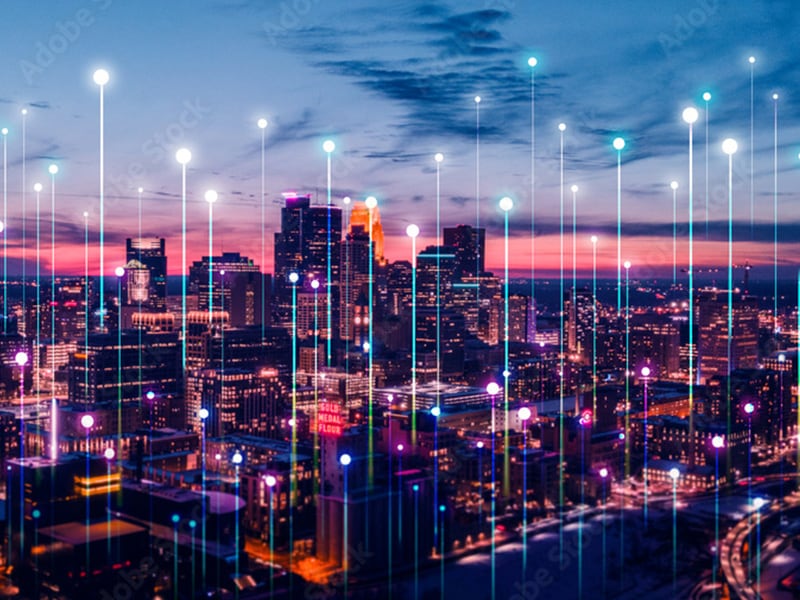
Navigating Building Regulations and Leveraging Incentives to Empower Sustainability
In this episode of Smart Energy Voices, host Debra Chanil speaks with Melissa Banks, Regulatory and Utility Advocacy Director at Trane Technologies, about the complex landscape of building decarbonization and sustainability. Banks discusses the increasing importance of regulatory compliance, utility incentives, and tax benefits in making energy efficiency projects financially viable for businesses and building owners.July 12, 2024
-
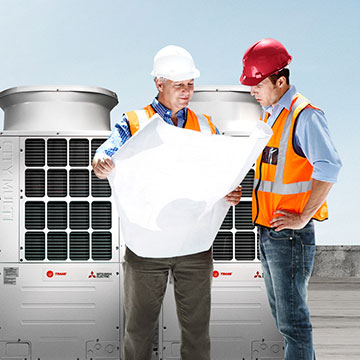
How to Avoid Common Pitfalls in the Design and Installation of VRF Systems
At Trane, we want to help make sure every VRF project you have is a success. We recognize that VRF design and installation can be complex due to its nature and variety of manufactures with unique installation rules.June 27, 2024
-
Join us as we delve into a live case study with EnerSys, a leader in sustainable practices, to explore the intricacies of balancing a portfolio of energy efficiency (EE) and electrification projects within sustainability goals.
June 19, 2024
-
Modernizing Yesterday’s Buildings to Leverage Today’s Opportunities
This webinar will highlight common system types from the past 50 years, exploring retrofit and upgrade opportunities inclusive of the latest technologies to help customers reach their goals – from decarbonization, energy efficiency, productivity, compatibility and more.June 11, 2024
-
Unlocking School Improvements: Leveraging ESPC to Maximize District Funds
K-12 school districts nationally are facing billions of dollars in deferred maintenance and other costs associated with aging buildings, while energy costs continue to rise, and inflation is putting additional pressure on education budgets.June 11, 2024
-
Optimizing Healthcare Spaces: Trane's Innovative Approach
In the latest episode of the "I Don't Care" Podcast, Dr. Stevenson talks with one of our Healthcare Strategy Leaders, Christy Fetsch, to discuss how Trane has moved beyond our HVAC expertise to modernize and decarbonize infrastructure, to help healthcare facilities in achieve their sustainability goals and optimize environments for positive patient outcomes.June 07, 2024
-

The New Math: Balancing Decarb with Your Business & Mission Imperatives
Sooner or later, every organization that sets out on the path to decarbonization asks the same big question: how can we meet our decarbonization targets while keeping our business goals intact?May 29, 2024
-
Discover TRACE® 3D Plus: A Closer Look at the Latest Features
Join us for a walkthrough of the latest version of TRACE® 3D Plus, our next generation building design and analysis software program.May 16, 2024
-
Unlocking the Potential of AI in Buildings
Discover the future of smart buildings, where artificial intelligence (AI) has revolutionized the built environment with solutions that unlock unparalleled performance and insight – a future where indoor spaces meet new levels of performance, energy efficiency, and occupant comfort, with intelligent building systems.May 07, 2024
-
Maximizing IRA Funding to Improve Campus Facilities and Impact Students
A University Business Ed Talk featuring Trane Expert Becky WackerMay 01, 2024
-
Seizing the Day: Decarbonization as an Organizational Opportunity
In this episode of Smart Energy Voices, Debra Chanil welcomes back Becky Wacker, the Director of Energy Services Sales at Trane Commercial. In Episode 88, they dug into the challenges and opportunities that commercial building operators face today in light of their decarbonization efforts.April 05, 2024
-
The Green Campus: Practical Facilities Improvement Strategies
A University Business Ed Talk featuring Michael Hines, Education Leader for Energy Services.April 02, 2024
-

Achieving the Benefits of ASHRAE® Guideline 36 in Rooftop Systems
Explore how ASHRAE® Guideline 36 strategies - deployed today most commonly by complex applied systems - can be simplified and extended to more buildings by utilizing packaged rooftop systems to help more customers achieve their sustainability goals.March 26, 2024
-
Greening the Blueprint: Strategies for Responsible Business
Modern organizations are embarking on a transformative journey toward responsible building practices through tailored decarbonization strategies. In this session, we delve into facility decarbonization, where complexity abounds, and decision-making intersects with organizational priorities. We’ll take you along as we explore a real-life example of a client journey to meet bold decarbonization goals.February 14, 2024
-
Making Strategic Facilities and Infrastructure Investments—Before ESSER Funds Expire
Federal ESSER funds have offered much-needed resources to districts to address pandemic learning loss, while also providing unprecedented opportunities to address deferred facilities maintenance issues and make thoughtful investments in school infrastructure. With ESSER expiring in September 2024, now is the time to ensure these funds are strategically allocated for facilities and infrastructure upgrades that will last well into the future.November 21, 2023
-
How to Make Any Building a Smart Building
A strong smart building foundation starts with 4 key areas: connectivity, cybersecurity, serviceability, and resilience. Addressing these through building controls and automation is the key to creating spaces that prioritize performance and energy efficiency without sacrificing occupant comfort.November 16, 2023
-
Maximize Your Business Outcomes Through Data & Team Collaboration
For building owners, executives, facility managers, financial decision-makers, sustainability advocates, and their teams – unlock the power of collaboration to optimize your building operations. Discover how data can align strategic objectives and deliver successful outcomes achieved through teamwork.November 08, 2023
-
Geothermal and Thermal Energy Storage Systems: Opportunities to Decarbonize
This webinar will explore trend shifts in the market to incentivize geothermal and thermal energy storage. Presenters will discuss key application considerations for distributed and centralized geothermal systems including a review of equipment. Thermal energy storage economics and cooling and heating system applications will also be discussed.October 25, 2023
-
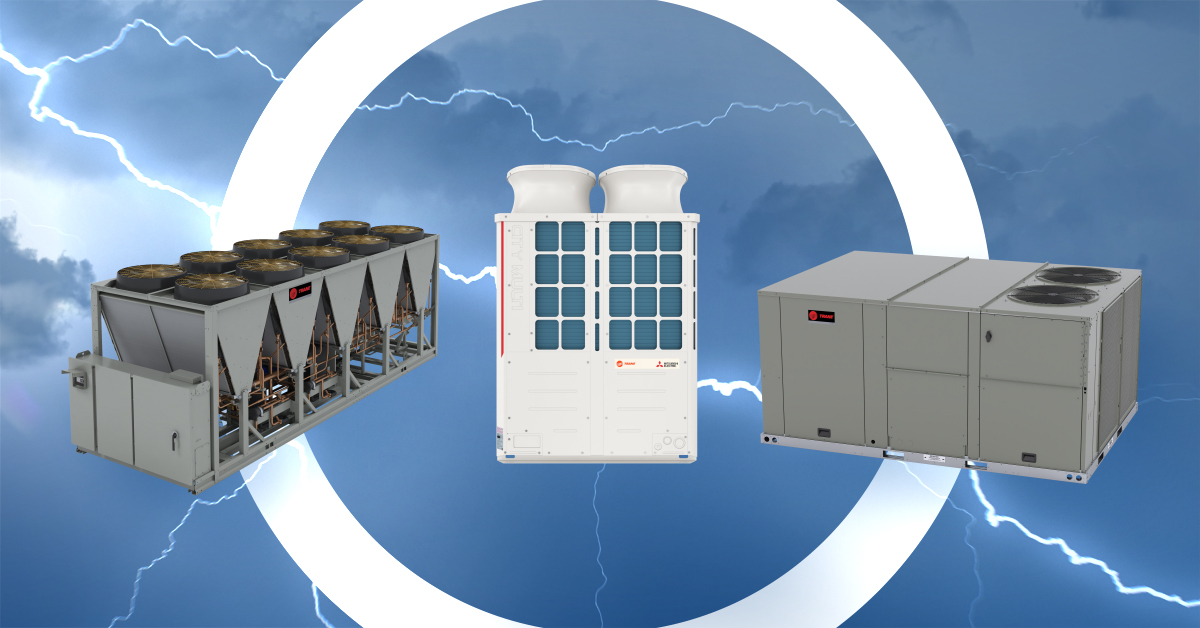 Trane has been in the HVAC business since 1916. Back then, there wasn’t much talk of microgrids or decarbonization, but that’s exactly what my guest’s group is doing today. Becky Wacker, Trane’s sales director for Energy Services, says their group grew out of a long history understanding the spaces they’re cooling. That comes in handy, despite an entire industry that specializes exclusively in energy efficiency.
Trane has been in the HVAC business since 1916. Back then, there wasn’t much talk of microgrids or decarbonization, but that’s exactly what my guest’s group is doing today. Becky Wacker, Trane’s sales director for Energy Services, says their group grew out of a long history understanding the spaces they’re cooling. That comes in handy, despite an entire industry that specializes exclusively in energy efficiency.October 23, 2023
-
 Trane has been in the HVAC business since 1916. Back then, there wasn’t much talk of microgrids or decarbonization, but that’s exactly what my guest’s group is doing today. Becky Wacker, Trane’s sales director for Energy Services, says their group grew out of a long history understanding the spaces they’re cooling. That comes in handy, despite an entire industry that specializes exclusively in energy efficiency.
Trane has been in the HVAC business since 1916. Back then, there wasn’t much talk of microgrids or decarbonization, but that’s exactly what my guest’s group is doing today. Becky Wacker, Trane’s sales director for Energy Services, says their group grew out of a long history understanding the spaces they’re cooling. That comes in handy, despite an entire industry that specializes exclusively in energy efficiency.October 23, 2023
-
Take VRF Further with Building Automation - Hosted by SMACNA
Two of the fastest growing HVAC trends today are all-electric VRF technology and the rise of smart buildings. Register to learn more about how leading with BAS solutions can help future-proof your projects and grow your bottom line.October 10, 2023
-
Drive Connections Within Your Organization to Achieve Business Outcomes
Gather your team – this webinar is for building owners, facility managers and their teams, as well as financial decision making and sustainability focused roles. We’ll discuss how data can assist with benchmarking performance, setting goals, and demonstrate what success can look like when all team members are aligned from the performance of operations to the organizational outcome results.October 10, 2023
-
Overcoming the Biggest Hurdle in Decarbonizing Buildings
When it comes to decarbonizing buildings, one of the biggest roadblocks is simply getting started. Understanding how to fund an energy services project and how to set measurable goals is critical to success.October 04, 2023
-

Electric Heat Pump Systems: The Future of Heating Buildings
This webcast will explore a wide range of reliable, efficient heat pump technologies and systems available today. Presenters will review equipment limitations and key application considerations. Heat pump benefits, operating principles and typical applied systems will also be discussed.September 28, 2023
-
Energy Efficiency and Sustainability Strategies to Decarbonize Your Property
Uncover the global and local initiatives the governments are driving, how to invest toward carbon reduction, as well as how they’re using ESG as a solution to drive change.September 18, 2023
-
Take VRF Further with Building Automation - Hosted by Contracting Business
Two of the fastest growing HVAC trends today are all-electric VRF technology and the rise of smart buildings. Register to learn more about how leading with BAS solutions can help future-proof your projects and grow your bottom line.September 14, 2023
-
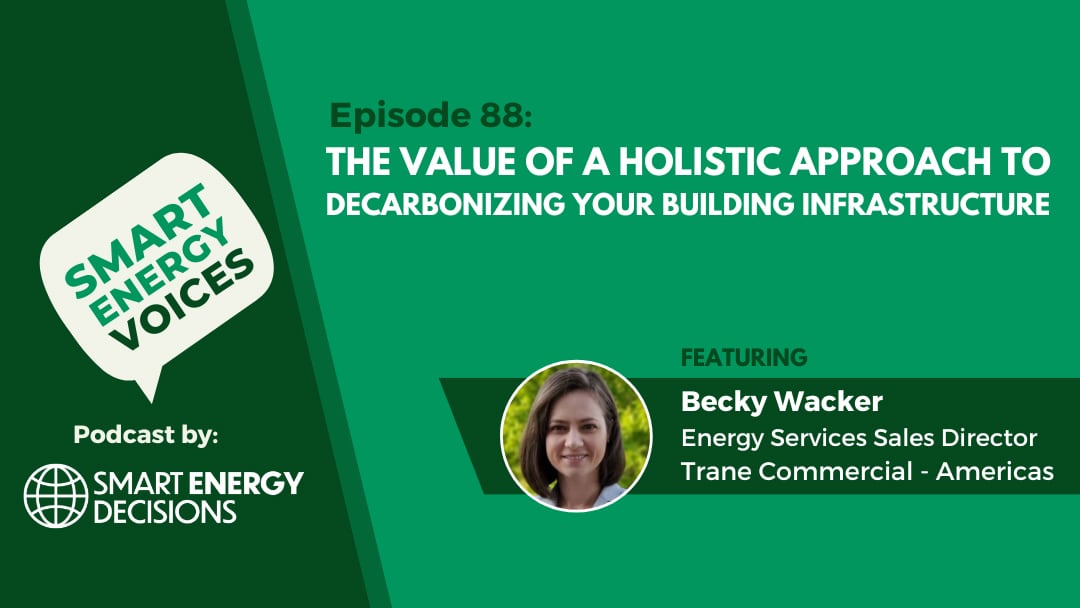
The value of a holistic approach to decarbonizing your building infrastructure
In this episode of Smart Energy Voices, produced in partnership with Trane, host Debra Chanil welcomes Becky Wacker. Becky is the Director of Energy Services Sales for Trane Commercial Americas. They discuss the challenges and opportunities that commercial building operators face today in light of decarbonization.September 08, 2023
-

Refrigerant Transitions: The Impact to Decarbonization and Equipment Performance
In this episode of Smart Energy Voices, produced in partnership with Trane, host Debra Chanil welcomes Becky Wacker. Becky is the Director of Energy Services Sales for Trane Commercial Americas. They discuss the challenges and opportunities that commercial building operators face today in light of decarbonization.September 08, 2023
-

Overcoming the Biggest Hurdles in Decarbonizing Buildings
In this episode of Smart Energy Voices, produced in partnership with Trane, host Debra Chanil welcomes Becky Wacker. Becky is the Director of Energy Services Sales for Trane Commercial Americas. They discuss the challenges and opportunities that commercial building operators face today in light of decarbonization.September 08, 2023
-
The stakes are high. Start looking at your building differently! Today’s building owners are faced with many challenges. From rising energy costs to a skilled labor shortage, now is the time to all learn how to address challenges and manage costs. This informative webinar is designed to empower building owners to take charge of their assets. It will provide valuable insights about leveraging data and unlocking the benefits of connected buildings.
August 23, 2023
-
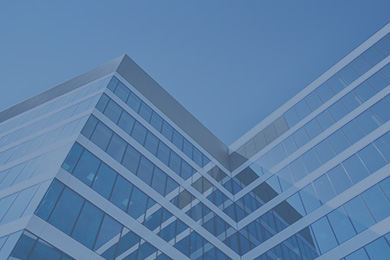
Evolving Smart Building Technology
The expectations for smart buildings are rapidly evolving in response to market and technology changes. Customers are demanding more than ever from their connected HVAC systems. Drivers including cybersecurity, integration potential, accessibility, and intelligent remote serviceability are influencing smart building evolution that determines the long-term success of a smart building solution.July 27, 2023
-
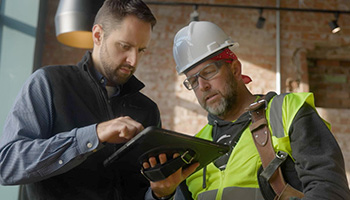
Next-Generation Rooftop Units and Split Systems: Powered by Digitally Enabled Unit Controllers
Connected buildings of the future drive efficiency and sustainability, and they start with digitally enabled HVAC systems. Trane’s next-generation rooftop units and split systems leverage next-generation Symbio unit controllers to provide reliable automation and drive ROI with increased sustainable operations.June 20, 2023
-
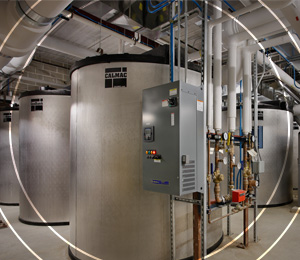
Ice Heating: Reimagining thermal energy storage in an electrified world
This webinar will explore reliable, efficient solutions for electrification of thermal management systems aimed at reducing carbon emissions in dense urban environments where rooftop space is limited or in cold climates. Thermal Battery™ storage-source heat pump system benefits, limitations, and best practices will also be discussed.May 24, 2023
-
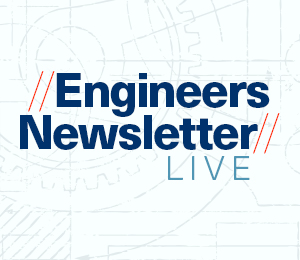
Building Pressure Control Engineers Newsletter LIVE
In this program, we will review the factors that influence building pressure. We will also explain how HVAC system operation can impact ventilation airflow rates, exhaust rates, and the resulting building pressure. Then we will demonstrate and discuss several common building pressure control techniques and controls using a model building. Finally, we will review several industry standard requirements related to building pressure control.May 17, 2023
-
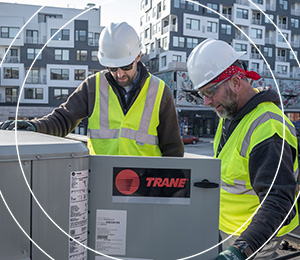
The 5 Rooftop Trends to Watch in 2023
In this session, we’ll share what’s changed in the light and large rooftop space in recent years. We’ll dive into the latest trends including decarbonization through energy efficiency and electrification of heat, modernizing outdated system design and approaching service through data-driven connected solutions.April 18, 2023
-

Modular Chiller Plant Design Engineers Newsletter LIVE
Modular chillers have unique characteristics that require attention when designing a system utilizing their technology. In this program we will explain what a modular chiller is, identify different system types utilizing modular chillers, and explain what to consider when selecting a modular system.March 22, 2023
-
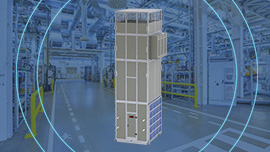
Design Flexibility and Enhanced Speed to Commissioning with Trane Air Rotation Units
Discover how Air Rotation Units (ARUs) offer cost-effective heating and cooling for large spaces, cutting installation, energy, and maintenance costs.March 08, 2023
-
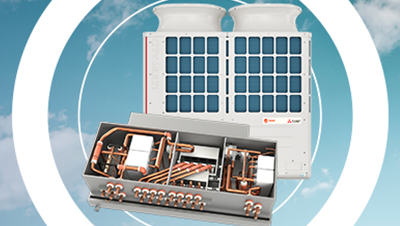
Introducing HVRF: Combining Water and Refrigerant for a Sustainable HVAC Solution
The new Trane® / Mitsubishi Electric HVRF two-pipe heat recovery system uses a combination of water and refrigerant to provide all electric, simultaneous heating and cooling to multi-room buildings such as hotels, dormitories, and multi-family residences. HVRF combines the best of VRF and a chiller system into one solution for maximum comfort, flexibility, and reduced refrigerant in the overall system.January 24, 2023
-
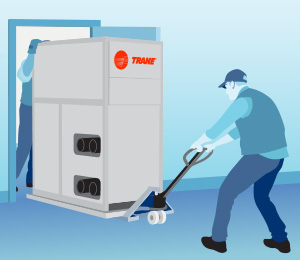
The True Value and Ease of Modular Units
Retrofitting a building’s HVAC system can be challenging, not to mention trying to figure out how to get new equipment into the building. Thermafit™ modules can help as they are compact and designed to fit where space is limited. They are also easy to service.January 12, 2023
-
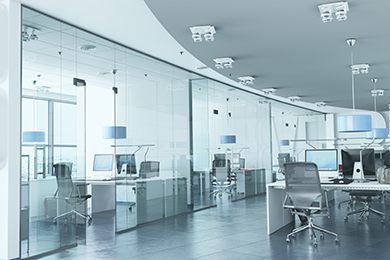
Building Communications and Protocols: Creating the Right Mix for the Right Application
Learn the various protocols, considerations, and application factors for building communication mediums to choose the right one that will best optimize your system.December 23, 2022
-

Today’s Packaged Rooftop Systems Applied to Yesterday’s Installations
This webinar will focus on today’s advanced packaged rooftop equipment when they’re placed in older installations. What should you consider? What are the best recommendations from systems experts?October 18, 2022
-
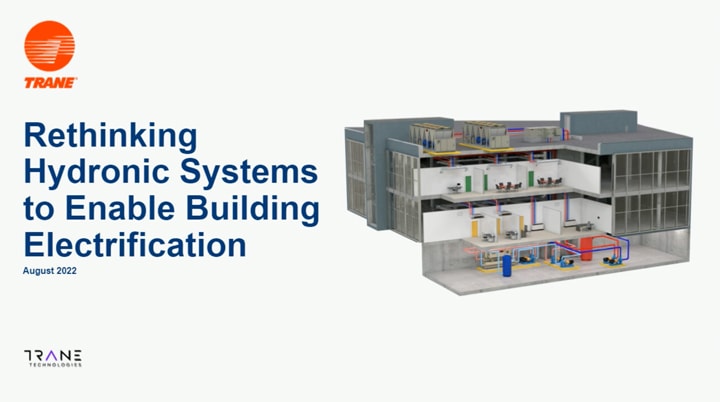
Rethinking Hydronic Systems to Enable Building Electrification
This webinar will explore solutions for electrification of thermal systems using site sourced, site recovered and compressor-based heating. Air-to-water and water-to-water heat pump system benefits, limitations, and best practices will be discussed as well as cold climate strategies.August 30, 2022
-
How Increasing Densities are Providing Sustainability Opportunities for Cooling
Are you ready to revolutionize your data center operations and drive your organization towards a more sustainable future? Join us for an exclusive webinar that explores the cutting-edge advancements in increasing densities within data centers and how these innovations can significantly enhance your sustainability efforts.August 21, 2022
-
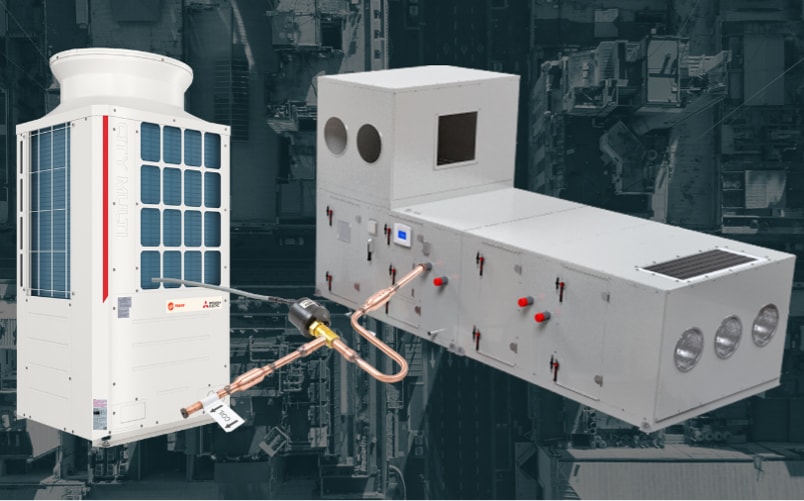
Pairing VRF with Applied HVAC Solutions
Learn how Linear Expansion Valve (LEV) Kits help pair VRF with applied HVAC solutions for more flexibility to meet a building’s specific load, airflow, and application requirements.July 27, 2022
-
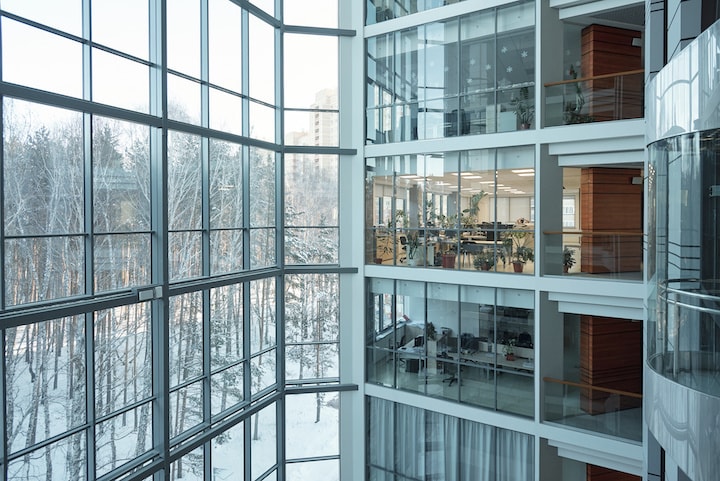
Shedding Light on New Integration Opportunities
Now more than ever, customers are seeking innovative, sustainable solutions to help improve buildings. As a result, engineers should opt for designing out-of-the-box energy efficient and future-proof solutions to meet their needs. As a partner in design, there are steps you can take to ensure the building automation system allows for future controls opportunities - from network lighting control to full integration.June 09, 2022
-

ESG Investors Want to Buy Data Centers New HVAC and Other Equipment
Data centers offer a particularly attractive investment for ESG funds and asset managers because of high energy and emissions intensity, customers and companies with sustainability commitments, and a strong market outlook.April 27, 2022
-
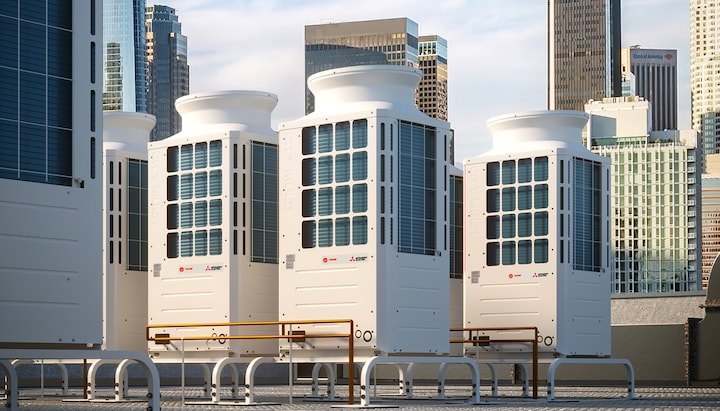 Want to learn more about VRF design best practices and hear insider tips and tricks that could help save you time on your next VRF project? Watch our webinar hosted by ASHRAE Journal and hear from two VRF field experts as they share insight from their combined engineering and application expertise.
Want to learn more about VRF design best practices and hear insider tips and tricks that could help save you time on your next VRF project? Watch our webinar hosted by ASHRAE Journal and hear from two VRF field experts as they share insight from their combined engineering and application expertise.February 02, 2022
-

IEQ: Planning for a Variable Future
The pandemic has put an intense focus on the quality of our indoor environment and especially on improving indoor air quality. Society’s values with respect to wellbeing and the dynamics of public spaces have changed. This means that buildings and occupants will have different needs for the complete built environment - improving indoor air quality, lighting, acoustics, and thermal comfort - going forward.January 20, 2022
-
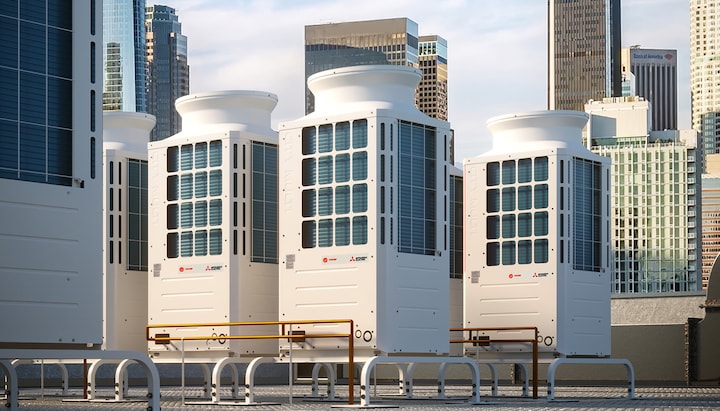
A Year in Review: 2021’s Top VRF Questions Answered
Join Trane VRF experts from across the country for a webinar where they will share the questions they get asked about the most.December 14, 2021
-

Clever Free Cooling to Enhance Your HVAC Design
This session takes a deep dive into different types of free cooling solutions for chilled-water systems including air-side vs water-side economizing and integrated vs standalone options.December 08, 2021
-

Whole Building Decarbonization: Insights from Industry Experts
In this webinar, you’ll hear from a group of industry experts on the whole carbon lifecycle and how various factors including materials, building shape and use, weather, use of renewables and efficient equipment, and proper refrigerant management can positively affect the long-term goals of a building and its ultimate impact on sustainable progress.November 10, 2021
-

Grow Your Business: BAS for VRF Made Simple
Watch this webinar to learn how leading with building automation solutions can help future-proof your light commercial VRF projects and grow your bottom line.November 09, 2021
-

Decarbonization Trends and Fundamentals for Contractors
Decarbonizing the building industry can feel complex, but it’s imperative for technical professionals like Contractors to have a foundational understanding of how this trend is impacting HVAC overall.November 09, 2021
-

Decarbonization: What, Where, and How to Make an Impact
This session will introduce the topic of decarbonization including why it’s needed for a sustainable future, where the grid is already getting greener, as well as potential electric solutions design teams can employ to help their customers.November 09, 2021
-

Importance of Pre-Engineered Control Systems for Complex Designs
Pre-engineered control applications, like those built into Tracer building automation systems, account for efficiency, IAQ, building codes and more right out of the box.October 28, 2021
-

Building Automation Systems (BAS) and Cybersecurity
Protect yourself and your customers by discovering the benefit of refocusing prevention efforts towards your building automation systems.September 14, 2021
-
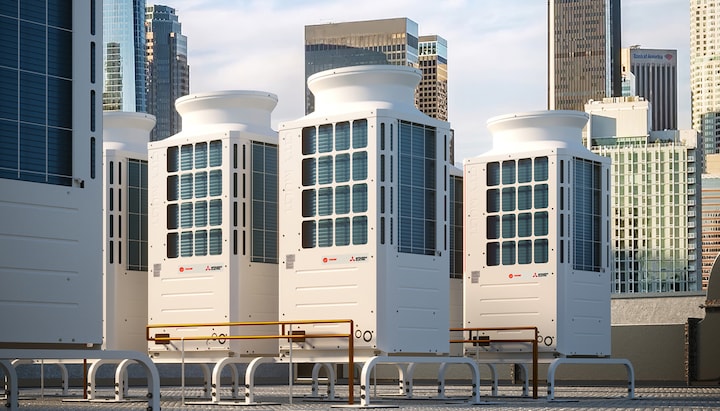
The ABC’s of VRF System Design for K-12 Schools
Break down VRF System design into a 4-step process, including system type, humidity control, ventilation, and system control.September 01, 2021
-
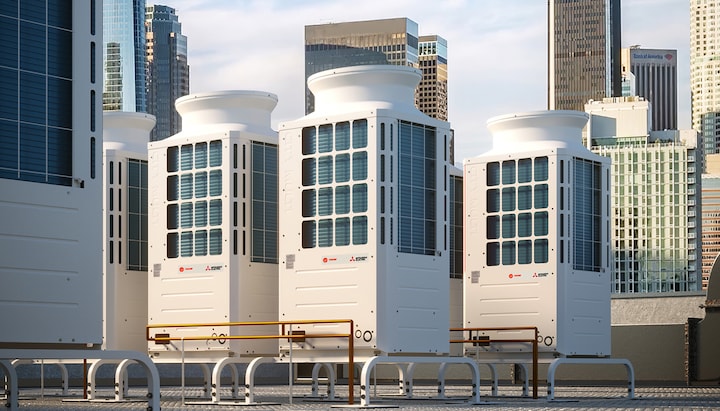
Design Considerations for Commercial VRF Systems
Designing a Variable Refrigerant Flow (VRF) System for your next project doesn’t have to be complicated. In this session, you will learn how to break down VRF System design into a 4-step process, including system type, humidity control, ventilation, and system control.June 08, 2021
-

How to Design Open Building Automation Systems
When a client requests an open building automation system, what does that really mean?June 03, 2021







